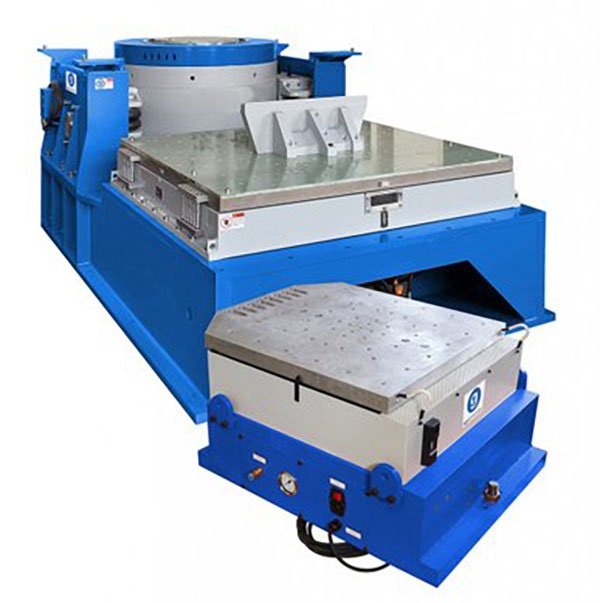Electromagnetic shakers generates vibration through electromagnetic force, and its working principle is based on electromagnetic induction. When the electromagnetic coil inside the device is energized, a magnetic field is generated to drive the fixed vibration platform to move up and down or left and right. By adjusting the size and frequency of the current, the amplitude and frequency of the vibration can be accurately controlled to meet the needs of different experiments. This kind of vibration table is widely used in material testing, product reliability assessment and other fields.
The importance of the frequency range is that it can realistically simulate the vibration conditions in different applications, affecting the reaction and fatigue characteristics of the material, avoiding resonance phenomena and ensuring the accuracy of the test data. The right frequency setting not only improves the reliability of the test, but also optimizes the product design to meet the needs of actual use.
Application diversity: Different products experience different vibration frequencies during use. Vibrators with a wide frequency range can simulate these different situations, making them suitable for multiple industries.
Data accuracy: The accuracy of test results is closely related to the frequency range. The right frequency Settings can provide more reliable data and help engineers and researchers make more effective decisions.
Real simulation: Different applications and environmental conditions will produce different vibration frequencies, and the appropriate frequency range can more accurately simulate the situation that may be encountered in actual use.
The frequency range of an electric vibrator usually depends on its design and application, and the common frequency range is roughly in the following intervals:
low frequency shaker: Typically operating at 5Hz to 200 Hz, are used to test larger, heavier structures
Medium frequency shaker: Frequencies range from 200 Hz to 5 kHz and are suitable for a wide range of applications, including automotive and industrial components.
high frequency shaker: Operating at frequencies higher than 5kHz, they are used to test smaller, more sophisticated electronic components and circuit boards.
Factors affecting the frequency range include equipment design, drive system performance, load characteristics and resonance characteristics, which determine the applicability and test effect of the electromagnetic shakers.
Drive electronics: The quality and design of drive electronics, including amplifiers, can limit or extend the upper frequency range. Advanced electronics can manage higher frequencies more precisely.
Armature design: The design of the armature (including its mass and balance) affects the frequency range. A well-designed armature reduces the risk of mechanical resonance, thereby limiting the frequency range.
Thermal management: The ability to dissipate heat is critical for high-frequency operations, as increased current flowing through the coil generates more heat.
Cooling system: Since heat buildup can affect performance, an effective cooling system is critical to maintaining a stable frequency range, especially during continuous operation.
Magnetic circuit: The design of the magnetic circuit, including the type and arrangement of magnets, affects the efficiency and thus the range of frequencies that can be achieved.
Control system: The ability of the control system to accurately modulate the input signal is critical to maintaining a consistent frequency output over the entire range.
Force output: The maximum force a vibrator can produce affects its low frequency capability. The greater the force, the greater the mass moving at lower frequencies.
Electromagnetic shakers is a powerful vibration test tool, and its frequency range is an important index of its performance. Understanding the various factors that affect the frequency range helps to select the right electromagnetic shakers for your specific test needs, ensuring that the product has been thoroughly evaluated and tested. This not only improves the reliability of the product, but also ensures that it can meet various challenges and requirements in practical applications, providing users with greater confidence and satisfaction.
